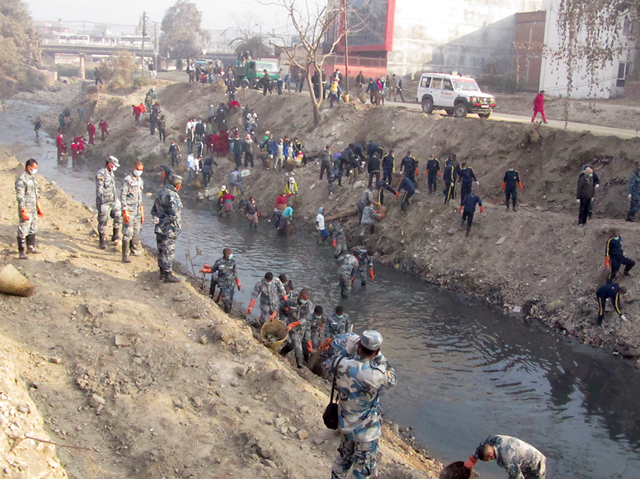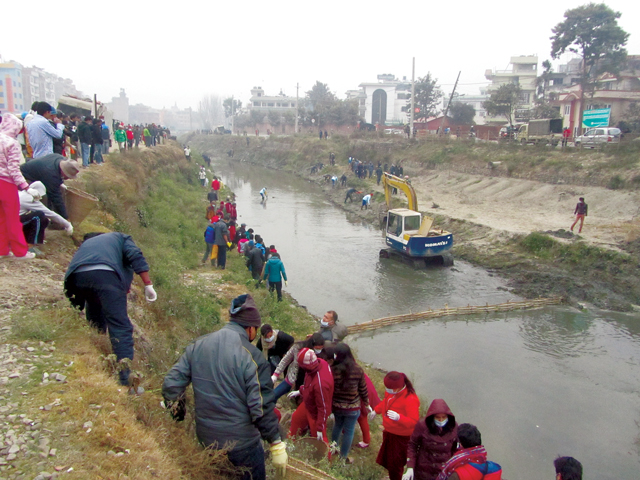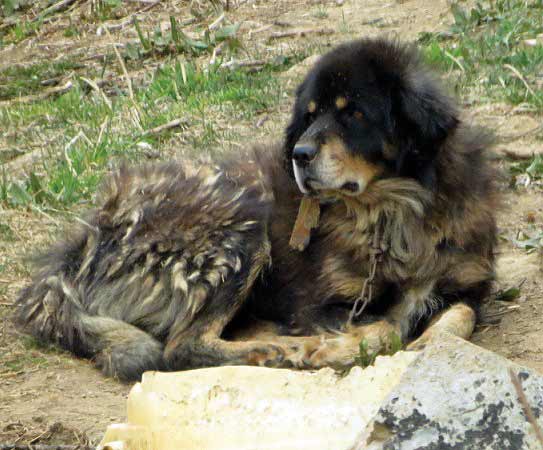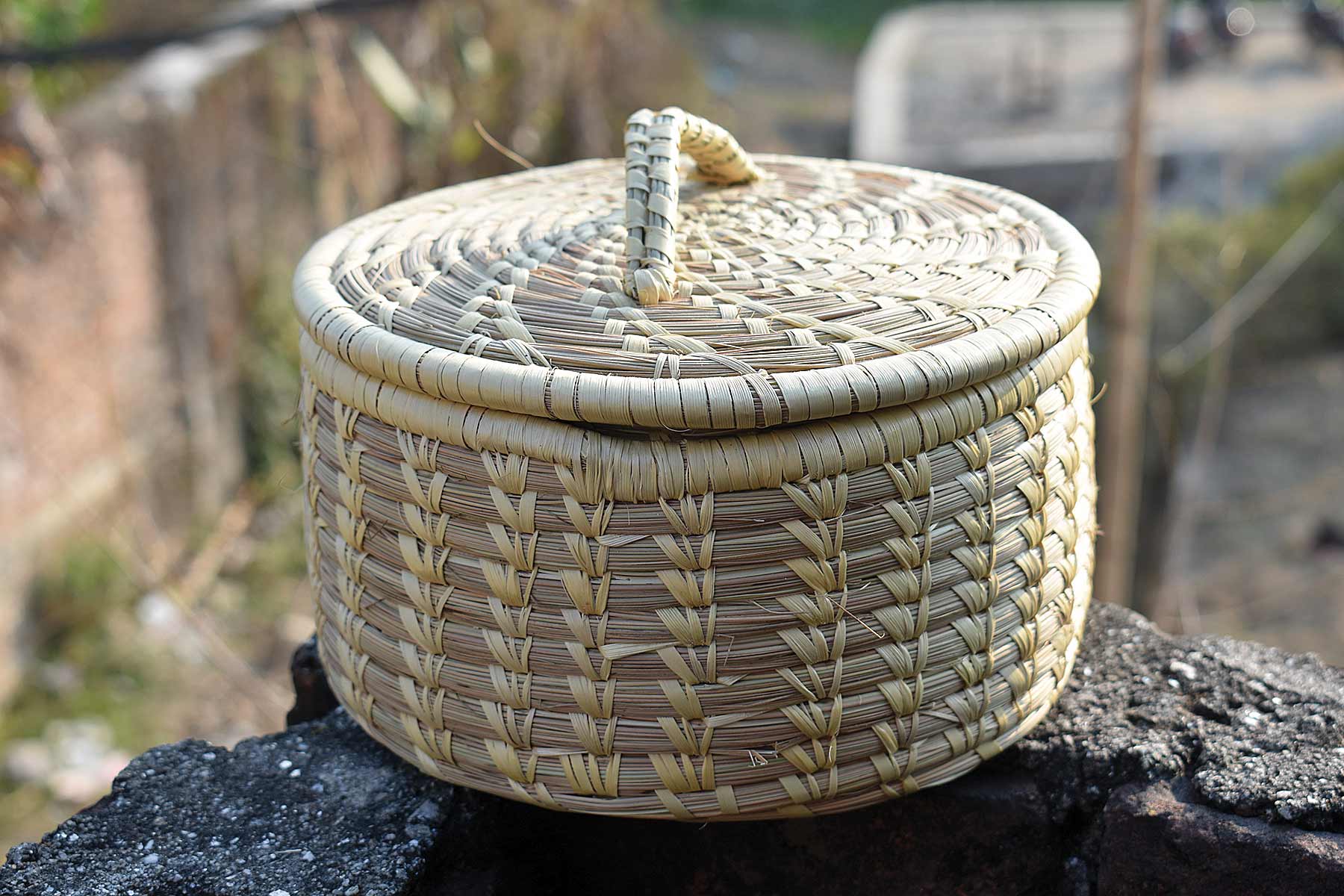Bagmati suffers from a plethora of woes, and the journey from a sewer to a holy river again doesn’t seem feasible until there is a proper system for waste segregation and sewage treatment.
 Running through the heart of the city, the Bagmati has forever been a witness to lives in this beautiful valley since centuries. The 3,640 km river basin originates from the Shivapuri hill, and passes through the valley at Chovar.
Running through the heart of the city, the Bagmati has forever been a witness to lives in this beautiful valley since centuries. The 3,640 km river basin originates from the Shivapuri hill, and passes through the valley at Chovar.
Legends surrounding the river have it that it originated from Lord Shiva’s laughter. “Nepali Hindus of the valley perform various rituals on its banks. The river has helped us preserve our culture and tradition,” says Hirananda Timalsina, an associate professor at Valmeeki Vidyapeeth, Kathmandu.
A sacred river for the Hindus, birth to death rituals are performed by hundreds everyday on the banks of the river.

As with other historical sites of the valley, it is not uncommon to hear pleasant stories about the river from the elderly. They cannot stop gushing over how clean it once was. But, such anecdotes seem nothing less than a fairy tale to the young kids today, because they have only known the river as a ‘dumping site’. When we pass by it, the stench emanating from the river forces us to pinch our nose. We rue that the river has been polluted beyond measure, making it impossible to see its waters clean again. Once, when I was traveling by public vehicle, a lady, a government employee, was boasting about the government’s efforts to beautify Kathmandu before the SAARC Summit. When the vehicle was crossing through Thapathali, she quickly turned the other side, pulling up her face mask. “Other areas can be painted and decorated for an outward show, but how will they do away with this stench?” she lamented. We are quick to take such jibes, but we do not realize that it’s this same selfish attitude responsible for the plight of the river. It’s us who have converted it into a sewer over the past few decades.

The population of the valley has increased manifold. The sewage pipes are linked directly to the river, and human ashes float on the banks of the river at Pashupatinath Temple. With all the garbage and filth, the Bagmati just about manages to slog around the nooks of the valley.
 When things had started turning grim for the river, a man took it upon his shoulders to clean the river bit by bit—Hutta Ram Baidya, who later came to be called the “Bagmati Man” because of his unstinting hard work to save the river. He has spent decades trying to restore the historical and cultural significance of the river. It is distressing that a man who spent 20 years to clean the river of its trash feels that there is very little that can be done to bring back its previous glory. “Now, there is nothing left that I can do,” he had said in an interview a couple of years ago. He felt that it was hard to evoke a collective consciousness among people, who are too money-centered, towards the degrading state of the river. His call for public involvement in the clean-up drive, using different home-grown technologies, also fell in deaf ears. Eventually, his enthusiasm dwindled, as he alone could not translate the awareness raised by him into a meaningful movement.
When things had started turning grim for the river, a man took it upon his shoulders to clean the river bit by bit—Hutta Ram Baidya, who later came to be called the “Bagmati Man” because of his unstinting hard work to save the river. He has spent decades trying to restore the historical and cultural significance of the river. It is distressing that a man who spent 20 years to clean the river of its trash feels that there is very little that can be done to bring back its previous glory. “Now, there is nothing left that I can do,” he had said in an interview a couple of years ago. He felt that it was hard to evoke a collective consciousness among people, who are too money-centered, towards the degrading state of the river. His call for public involvement in the clean-up drive, using different home-grown technologies, also fell in deaf ears. Eventually, his enthusiasm dwindled, as he alone could not translate the awareness raised by him into a meaningful movement.

In 1997, he wrote a paper titled, “The Endangered Bagmati Civilization of Kathmandu Valley”, where he elaborately discussed on the concept of ‘Bagmati Civilization’. One reason he points out for the lack of active public engagement in cleaning the river is, lack of consciousness regarding the historical importance of the river that is synonymous with the establishment of a civilization.
 Amidst such dark clouds, a glimmer of hope was felt when another campaign kicked off three years ago. Since then, ‘Bagmati Clean-up Campaign’ has managed to gather enormous support, and most importantly, people have been coming out in large numbers on weekends to extend their help. “Not only has locals’ participation been impressive, but this clean-up drive has inspired many other such campaigns across the country,” says Megh Ale, founding head of Nepal River Conservation Trust (NRCT).
Amidst such dark clouds, a glimmer of hope was felt when another campaign kicked off three years ago. Since then, ‘Bagmati Clean-up Campaign’ has managed to gather enormous support, and most importantly, people have been coming out in large numbers on weekends to extend their help. “Not only has locals’ participation been impressive, but this clean-up drive has inspired many other such campaigns across the country,” says Megh Ale, founding head of Nepal River Conservation Trust (NRCT).
Ale points out five major ways to curb the pollution level in Bagmati: 1. Waste management must start from home, 2. Sewage pipes should have other outlets, rather than the river, 3. Increasing the level of water in the river, either through Melamchi water project, or through harvesting rainwater, 4. Law to punish those who dispose of solid waste into the river. Land encroachers are another threat, and 5. All the campaigns running to cure the river of its ailment should continue for a long time for total clean-up of the river.
He fervently says that it’s kind of a ‘peaceful protest’ to draw the government’s attention towards the issue, as well as to build community ownership.
Although Ale’s vision for a clean Bagmati may look impossible to most of us, he is certain that it largely depends on the government’s will. “A strict law to punish those who dump solid waste into the river is the need of the hour,” he says. Ale, who has been actively involved in this drive since its inception, sounds hopeful when he says that sewage treatment has been successfully completed till Minbhawan bridge.
The claims about seeing a clean Bagmati again seem far from reality, because a gamut of issues has to be addressed from scratch. “The water in the area from Sankhamul to Pashupati is the most polluted, because the area is densely populated,” says Radhika Khatiwada, former secretary, AANFSU. “But, blaming the public doesn’t solve the problem, because they don’t have a choice,” she adds.
“Apart from the ashes of the bodies cremated on its banks at Pashupati, the river carries solid waste from factories and small-scale paper industries. The factories and hospitals should refrain from throwing wastes that can be reused.”
She further adds, “The government must devise ways to punish the polluters. For instance, imposing a fine, or detention for a certain period of time, could go a long way in making people conscious.”
The Bagmati currently suffers from a plethora of woes, and the journey from a sewer to a holy river again doesn’t seem feasible until there is a proper system for waste segregation and sewage treatment. We must protect the river that we revere, so that we are again able to boast about the Bagmati that has nurtured and supported the rise of Nepali civilization, as Baidya reiterated again and again till his demise.











